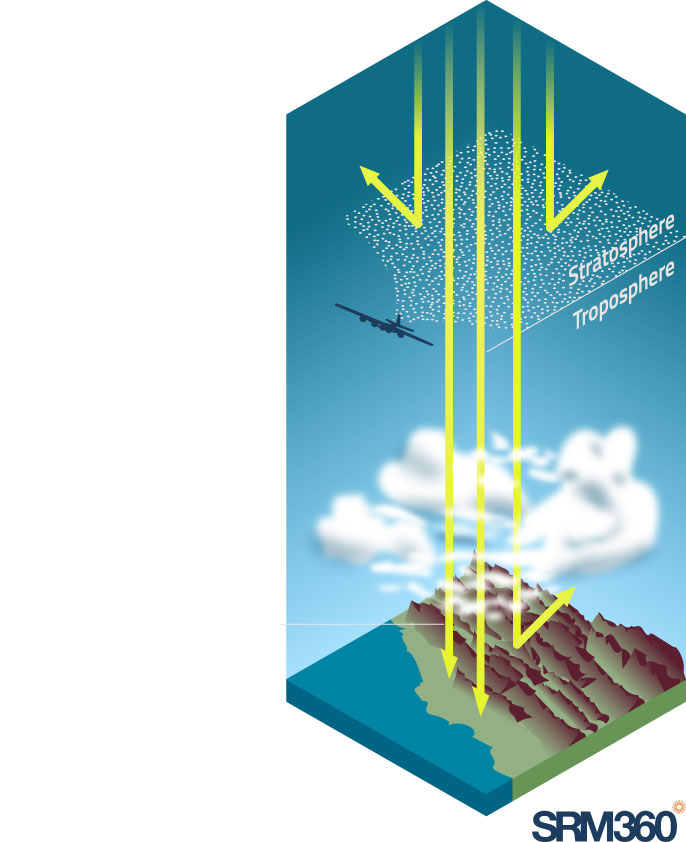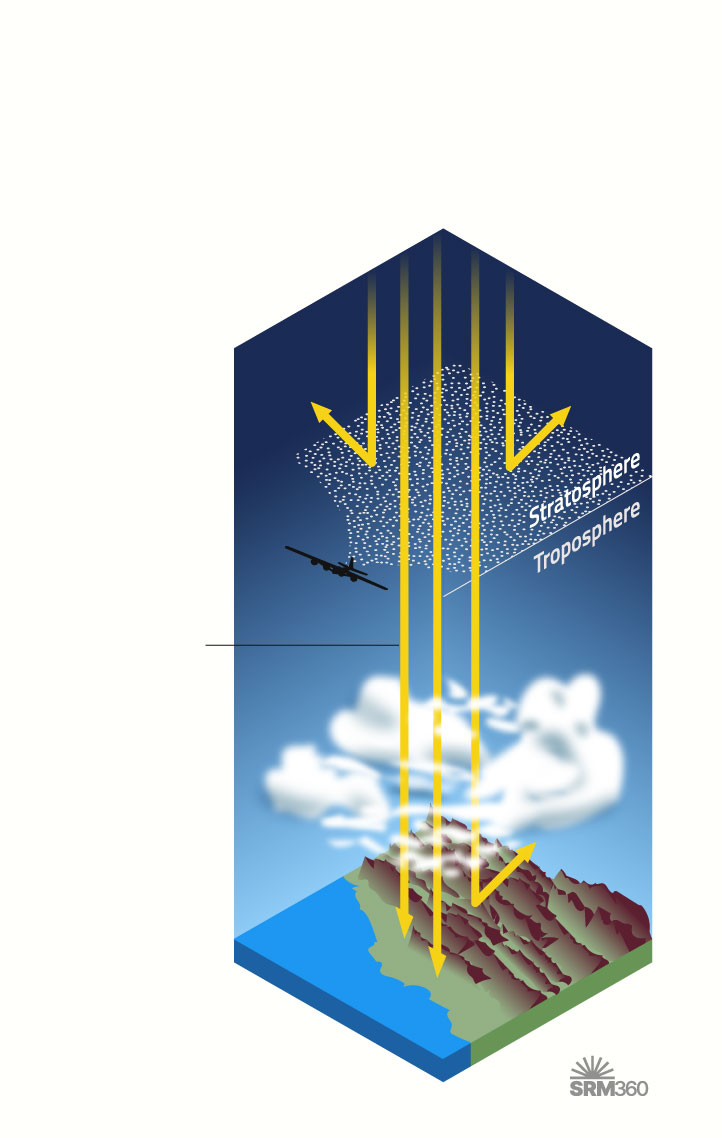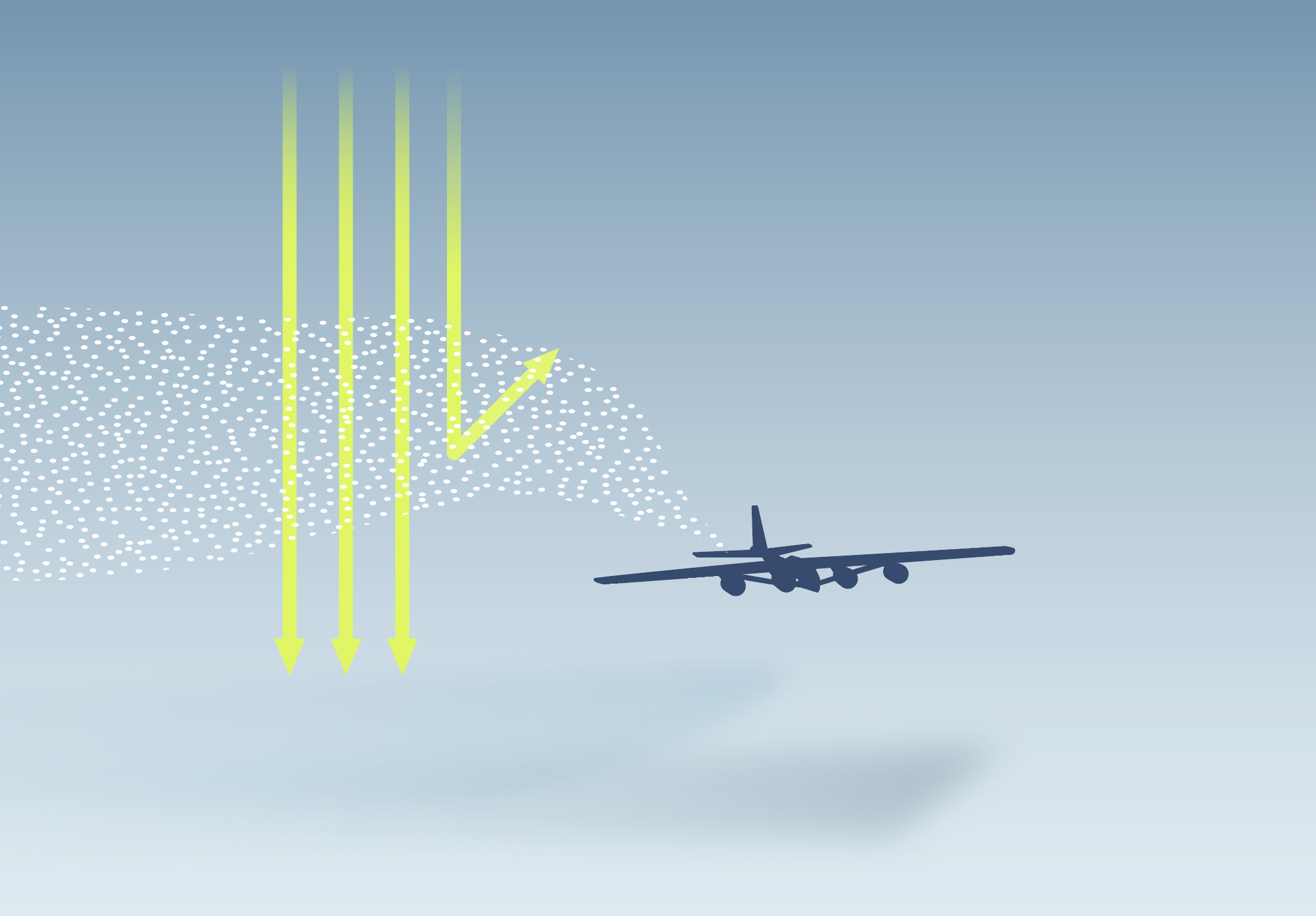Article
Risk-Risk Analysis: Understanding the Risks of SRM in Context
The deployment of sunlight reflection methods (SRM), also known as solar geoengineering, would present many risks – but so would a future of climate change without SRM. How can these risks be assessed to support well-informed decision-making?

Illustration: Jason Schneider
Key takeaways
- Any deployment of SRM would present serious risks, but climate change may pose even greater risks.
- A risk-risk analysis that weighs the risks of SRM against those of climate change would be an essential contribution to informed decision-making on SRM.
- Research suggests that SRM might reduce physical risks overall if used wisely, but it may undermine emissions cuts or lead to geopolitical risks.
SRM Guide
Could SRM Help Reduce Climate Risks?
Cisplatin is a platinum-containing compound that can cause systemic harm to the human body. People exposed to it can suffer from nausea, kidney damage, and potentially permanent hearing loss.
In spite of this, millions of people have willingly exposed themselves to this toxic substance, accepting the risks it poses. This is because cisplatin also suppresses cell division – it is an effective chemotherapy drug that helps to slow or stop the spread of cancer.
Deciding whether or not to endure chemotherapy is a difficult decision, but it is one that cannot reasonably be made without considering the alternative. Doctors and patients weigh the risks of the treatment against the risks of the cancer.
While the risks, options, and decision-making differ greatly, the same general principle applies to SRM. Making informed decisions about whether and how to deploy SRM in the future would require weighing the risks of SRM against the risks of climate change that it might help reduce.
The physical risks and side effects of SAI

Stratospheric aerosol injection (SAI)
Tiny particles released in the stratosphere would directly reflect a small fraction of sunlight.
Sunlight
Source: SRM360.org

Stratospheric aerosol injection (SAI)
Tiny particles released in the stratosphere would directly reflect a small fraction of sunlight.
Sunlight
Source: SRM360.org
The most studied SRM approach is stratospheric aerosol injection (SAI), which would create a layer of tiny reflective particles in the upper atmosphere. SAI appears to be able to cool the planet fairly evenly,1 but it could not fully counteract climate change. Notably, some regions would likely see a greater change to rainfall if SAI were deployed than they would see under climate change alone.2
SRM would not only fail to fully counteract the risks of climate change, but it would also introduce new risks through its side effects. The particles used for SAI could delay the recovery of the protective ozone layer by decades, delaying the gradual decrease in the risk of skin cancer from the sun’s rays.3 These particles could also contribute a small amount to existing air pollution, which could increase the risk of lung damage.4
The consequences of these side effects would be serious, potentially contributing to tens of thousands of premature deaths per year for 1°C of global cooling, according to one study.5 Combined with the potential for SAI to shift rainfall patterns,2 these could appear to be good reasons for rejecting this idea.
How do these risks compare to those of climate change?
However, the risks of SRM cannot be understood in isolation. The same study that found the impacts of SAI’s side effects could cost tens of thousands of lives also found that 1°C of global cooling would avoid hundreds of thousands of temperature-attributable deaths per year.5
Climate change is leading to more intense heat extremes, melting glaciers, and rising seas. It also causes the atmosphere to hold more moisture, intensifying both droughts and extreme rainfall around the world.6 These impacts and others are strongly driven by rising temperatures, and studies suggest that geoengineering with SAI could reduce these risks by cooling the planet.7
Even done well, SAI would undoubtedly introduce some new environmental risks, but by lowering the global temperature, it would also help reduce many climate risks. Deciding whether and how to deploy SAI would require carefully weighing the full range of its environmental risks against those of climate change.
The broader risks
However, the differences between a world with SRM deployment and one without go beyond the physical risks.
Scientists suggest SRM should be seen as a potential complement to strong emissions cuts, carbon dioxide removal, and adaptation.8 However, there are concerns that SRM could undermine emissions cuts by providing an excuse to slow action on climate change. If this happened, the world would see worsened ocean acidification and a greater level of global warming to counteract or endure.
On the other hand, a warmer world without SRM is likely to lead to greater emissions of methane and carbon dioxide from natural sources, such as tropical wetlands and permafrost.9
It is also possible that uninformed or irrational decisions on SRM could be made, further complicating a risk-risk analysis. For example, deploying SAI in just one hemisphere would cause significant shifts in tropical rainfall and have severe consequences.10
Another concern is that SRM could lead to greater international tensions and potential conflicts,11 but it is again important to consider the risks of the alternative. Could more severe climate change, with all its impacts on infrastructure, resources, and livelihoods, increase the risk of conflict and raise international tensions?12
A full accounting of the risks of SRM and climate change would need to go beyond comparing their physical risks. Both pose socio-political challenges and risks that cannot be dismissed.
Navigating difficult decisions
Policymakers considering whether or not to develop and deploy SRM would be in a situation similar to a cancer patient considering their treatment. Other options could be pursued, but they may not be able to slow the progress of the problem as much as SRM or chemotherapy.
Both SRM and chemotherapy come with serious side effects, but no informed decision can be made without comparing the risks of these options against the problems they seek to address.
A thorough risk-risk analysis comparing the risks of SRM and climate change will be a crucial contribution to decision-making on SRM, but many socio-political risks are not easily quantifiable. There are also important ethical and political questions, such as who would have the power to weigh these options and which concerns and perspectives would be considered when making these decisions.
Open questions
- Could SRM reduce climate risks overall? And if so, which regions might benefit least or be made worse off?
- How can socio-political risks be factored into a thorough risk-risk analysis of SRM and climate change?
- If SRM were developed and deployed, what impact would this have on emissions cuts, and could this undermine SRM’s potential benefits?
Endnotes
- Kravitz B, MacMartin DG, Tilmes S, et al. (2019). Comparing surface and stratospheric impacts of geoengineering with different SO2 injection strategies. Journal of Geophysical Research: Atmospheres. 124(14):7900-18. https://doi.org/10.1029/2019JD030329
- Ricke K, Wan JS, Saenger M, et al. (2023). Hydrological Consequences of Solar Geoengineering. Annual Review of Earth and Planetary Sciences. 51(Volume 51, 2023):447–70. https://doi.org/10.1146/annurev-earth-031920-083456
- Haywood J, Tilmes S, Keutsch F, et al. (2022) Chapter 6: Stratospheric Aerosol injection and its Potential Effect on the Stratospheric Ozone Layer. In: Scientific Assessment of Ozone Depletion 2022. pp. 325–375. https://csl.noaa.gov/assessments/ozone/2022/downloads/Chapter6_2022OzoneAssessment.pdf
- Tracy SM, Moch JM, Eastham SD, et al. (2022). Stratospheric aerosol injection may impact global systems and human health outcomes. Elementa. University of California Press. https://doi.org/10.1525/elementa.2022.00047
- Harding A, Vecchi GA, Yang W, et al. (2024). Impact of solar geoengineering on temperature-attributable mortality. Proceedings of the National Academy of Sciences, 121(52). https://doi.org/10.1073/pnas.2401801121
- IPCC. (2021). Summary for Policymakers. In Climate Change 2021 – The Physical Science Basis (pp. 3–32). In Press. https://doi.org/10.1017/9781009157896.001
- Irvine P, Emanuel K, He J, et al. (2019) Halving warming with idealized solar geoengineering moderates key climate hazards. Nat Clim Chang. 9(4):295–9. https://doi.org/10.1038/s41558-019-0398-8
- MacMartin DG, Ricke KL, Keith DW. (2018). Solar geoengineering as part of an overall strategy for meeting the 1.5 C Paris target. Philosophical Transactions of the Royal Society A: Mathematical, Physical and Engineering Sciences. 376(2119):20160454. https://doi.org/10.1098/rsta.2016.0454
- Chen Y, Moore JC, Ji D. (2024). Simulated responses and feedbacks of permafrost carbon under future emissions pathways and idealized solar geoengineering scenarios. Environmental research letters. 19(2):024050. http://doi.org/10.1088/1748-9326/ad2433
- Zhang Y, MacMartin DG, Visioni D, et al. (2024). Hemispherically symmetric strategies for stratospheric aerosol injection. Earth System Dynamics. 15(2):191-213. https://doi.org/10.5194/esd-15-191-2024
- Morrissey W. (2024). Avoiding atmospheric anarchy: Geoengineering as a source of interstate tension. Environment and Security. 2(2):291-315. https://doi.org/10.1177/27538796231221597
- Buhaug H, Von Uexkull N. (2021). Vicious circles: violence, vulnerability, and climate change. Annual Review of Environment and Resources. 46(1):545-68. https://doi.org/10.1146/annurev-environ-012220-014708





